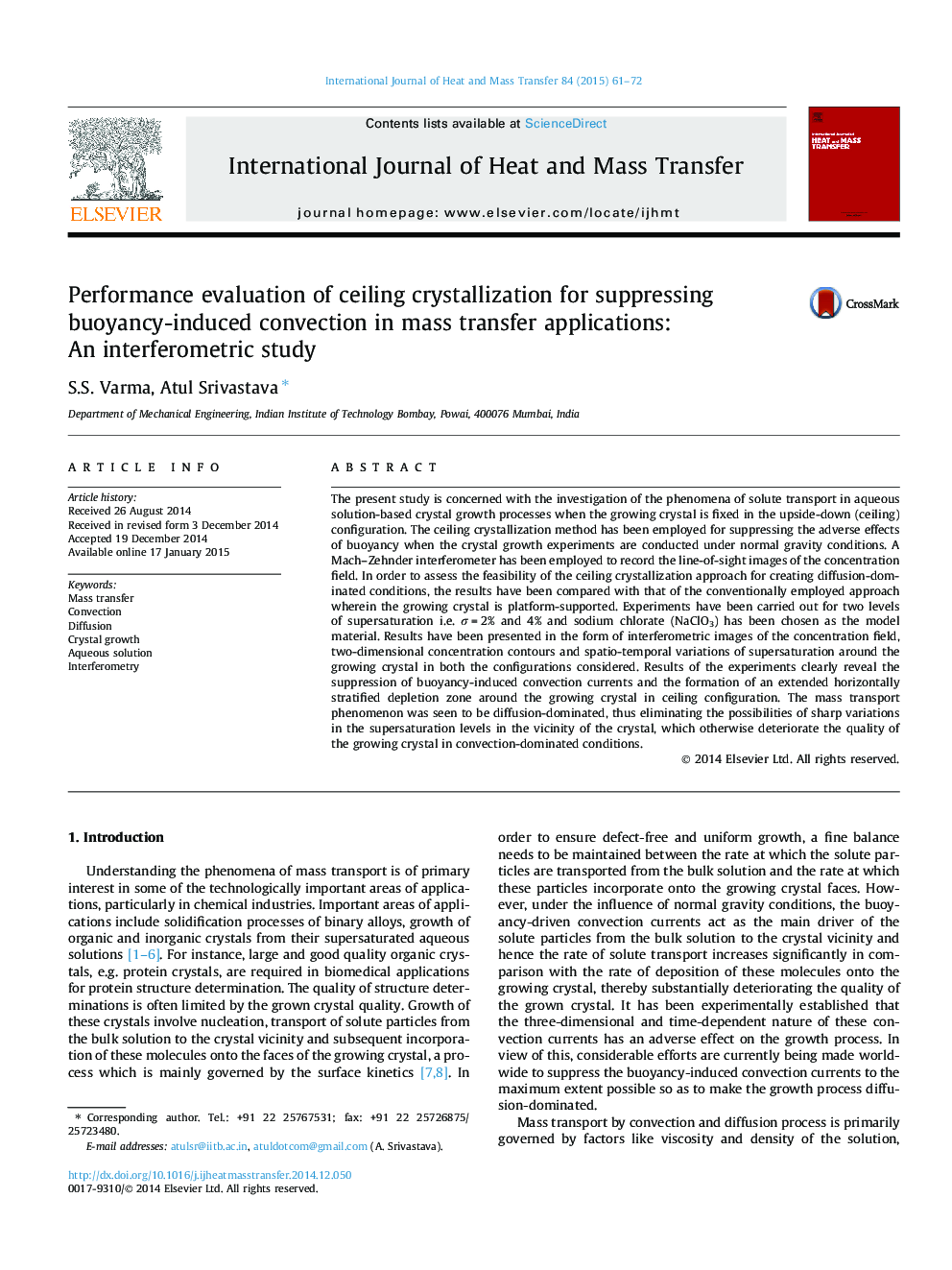| Article ID | Journal | Published Year | Pages | File Type |
|---|---|---|---|---|
| 656901 | International Journal of Heat and Mass Transfer | 2015 | 12 Pages |
Abstract
The present study is concerned with the investigation of the phenomena of solute transport in aqueous solution-based crystal growth processes when the growing crystal is fixed in the upside-down (ceiling) configuration. The ceiling crystallization method has been employed for suppressing the adverse effects of buoyancy when the crystal growth experiments are conducted under normal gravity conditions. A Mach-Zehnder interferometer has been employed to record the line-of-sight images of the concentration field. In order to assess the feasibility of the ceiling crystallization approach for creating diffusion-dominated conditions, the results have been compared with that of the conventionally employed approach wherein the growing crystal is platform-supported. Experiments have been carried out for two levels of supersaturation i.e. ÏÂ =Â 2% and 4% and sodium chlorate (NaClO3) has been chosen as the model material. Results have been presented in the form of interferometric images of the concentration field, two-dimensional concentration contours and spatio-temporal variations of supersaturation around the growing crystal in both the configurations considered. Results of the experiments clearly reveal the suppression of buoyancy-induced convection currents and the formation of an extended horizontally stratified depletion zone around the growing crystal in ceiling configuration. The mass transport phenomenon was seen to be diffusion-dominated, thus eliminating the possibilities of sharp variations in the supersaturation levels in the vicinity of the crystal, which otherwise deteriorate the quality of the growing crystal in convection-dominated conditions.
Related Topics
Physical Sciences and Engineering
Chemical Engineering
Fluid Flow and Transfer Processes
Authors
S.S. Varma, Atul Srivastava,
